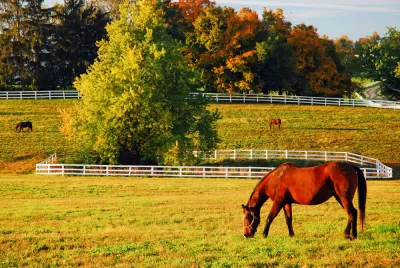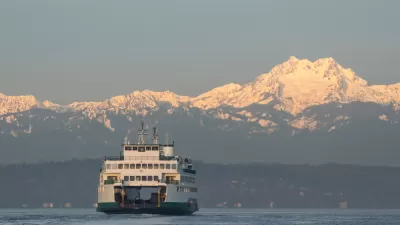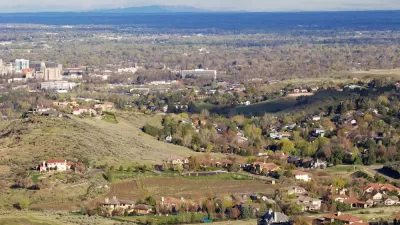Lexington, Kentucky's growth boundary survived a comprehensive plan update in 2019, after years of controversy. A housing crisis, a growing city, and a broken land use system are rearranging the political arithmetic behind the greenbelt.

Nolan Gray reports on the controversy surrounding the future of the oldest growth boundary in the United States, established by Lexington, Kentucky in 1958.
The Lexington greenbelt has stirred controversy throughout the public process of updating the city's comprehensive plan, according to Gray:
Businesspeople and developers argued that a lack of developable land in Lexington is driving businesses away and housing costs up, while defenders of the greenbelt countered that there is still ample land to develop without extending the boundary further.
Gray provides the history of the greenbelt (enacted to protect the horse breading industry from expanding suburban development) and catches up to contemporary times, when Lexington is a city of 350,000 with a diverse economy. "Many of Lexington’s new residents are economic migrants from the Rust Belt and the coal fields of Eastern Kentucky—my parents among them. These new Lexingtonians have little connection to the horse industry," explains Gray.
Meanwhile, the city's planners are still talking about infill and transit oriented development, and generating new mechanisms for delivering on those goals, such as the Placebuilder program, which "aims to ease up on the permitting hurdles facing mixed-use urban infill," according to Gray.
FULL STORY: America’s First Greenbelt May Be in Jeopardy

Alabama: Trump Terminates Settlements for Black Communities Harmed By Raw Sewage
Trump deemed the landmark civil rights agreement “illegal DEI and environmental justice policy.”

Planetizen Federal Action Tracker
A weekly monitor of how Trump’s orders and actions are impacting planners and planning in America.

How Atlanta Built 7,000 Housing Units in 3 Years
The city’s comprehensive, neighborhood-focused housing strategy focuses on identifying properties and land that can be repurposed for housing and encouraging development in underserved neighborhoods.

In Both Crashes and Crime, Public Transportation is Far Safer than Driving
Contrary to popular assumptions, public transportation has far lower crash and crime rates than automobile travel. For safer communities, improve and encourage transit travel.

Report: Zoning Reforms Should Complement Nashville’s Ambitious Transit Plan
Without reform, restrictive zoning codes will limit the impact of the city’s planned transit expansion and could exclude some of the residents who depend on transit the most.

Judge Orders Release of Frozen IRA, IIJA Funding
The decision is a victory for environmental groups who charged that freezing funds for critical infrastructure and disaster response programs caused “real and irreparable harm” to communities.
Urban Design for Planners 1: Software Tools
This six-course series explores essential urban design concepts using open source software and equips planners with the tools they need to participate fully in the urban design process.
Planning for Universal Design
Learn the tools for implementing Universal Design in planning regulations.
Jessamine County Fiscal Court
Caltrans
Institute for Housing and Urban Development Studies (IHS)
City of Grandview
Harvard GSD Executive Education
Toledo-Lucas County Plan Commissions
Salt Lake City
NYU Wagner Graduate School of Public Service





























